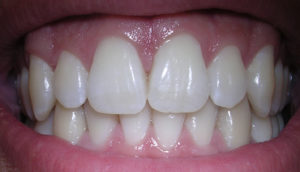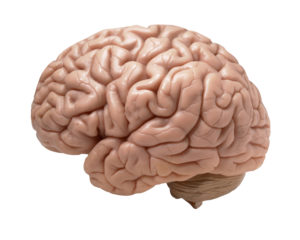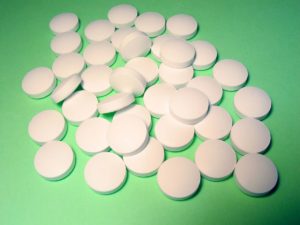 A new study has confirmed an association between proton pump inhibitors (PPIs) — drugs that treat heartburn, peptic ulcers, and other acid-related disorders of the upper gastrointestinal tract — and increased risk for dementia in older patients. An earlier study by the same researchers found the same link between PPI use and dementia risk. The drugs work by lowering the amount of acid produced by the stomach. PPIs are among the most frequently prescribed drugs, and include omeprazole (Losec), esomeprazole (Nexium), lansoprazole (Prevacid), and the over-the-counter medication Olex.
A new study has confirmed an association between proton pump inhibitors (PPIs) — drugs that treat heartburn, peptic ulcers, and other acid-related disorders of the upper gastrointestinal tract — and increased risk for dementia in older patients. An earlier study by the same researchers found the same link between PPI use and dementia risk. The drugs work by lowering the amount of acid produced by the stomach. PPIs are among the most frequently prescribed drugs, and include omeprazole (Losec), esomeprazole (Nexium), lansoprazole (Prevacid), and the over-the-counter medication Olex.
The U.S. Food and Drug Administration have warned people to take them for the shortest period possible, namely a few weeks, and only for serious acid reflux, ulcers, or stomach bleeding. Other problems linked to long-term use are: fractures, pneumonia, increased rates of C. difficile, low magnesium levels, and chronic kidney disease. From Science Daily:
Proton pump inhibitors may be associated with increased risk of Dementia
The use of proton pump inhibitors, the popular medications used to treat gastroesophageal reflux and peptic ulcers, may be associated with an increased risk of dementia in a study using data from a large German health insurer, according to an article published online by JAMA Neurology. The use of proton pump inhibitors (PPIs) has increased among older patients and PPIs are among the most frequently used classes of drugs.
Britta Haenisch, Ph.D., of the German Center for Neurodegenerative Diseases, Bonn, Germany, and coauthors examined the association between the use of PPIs and the risk of dementia using data from 2004 to 2011 on inpatient and outpatient diagnoses and drug prescriptions. Regular PPI use was at least one PPI prescription in each quarter of an 18-month interval.
The study population included 218,493 individuals 75 or older before 144,814 individuals were excluded, leaving 73,679 individuals included in the final analysis. The authors identified 29,510 patients who developed dementia during the study period. Regular users of PPIs (2,950 patients, mostly female and average age nearly 84) had a 44 percent increased risk of dementia compared with those (70,729 patients, mostly female and average age 83) not receiving PPI medication, according to the results.
"The present study can only provide a statistical association between PPI use and risk of dementia. The possible underlying causal biological mechanism has to be explored in future studies.

 The finding that the oral bacteria Streptococcus mutans, which is found in 10% of the population, is linked with hemorrhagic strokes is big. S. mutans is found in tooth decay or cavities (dental caries). The researchers found a link with cnm-positive S. mutans with both intracerebral hemorrhage (ICH) and also with cerebral microbleeds.
The finding that the oral bacteria Streptococcus mutans, which is found in 10% of the population, is linked with hemorrhagic strokes is big. S. mutans is found in tooth decay or cavities (dental caries). The researchers found a link with cnm-positive S. mutans with both intracerebral hemorrhage (ICH) and also with cerebral microbleeds. Another famous long-running study (Framingham Heart Study) finds more bad news for middle-aged coach-potatoes (that is, those who don't exercise or have poor physical fitness). It's an observational study (thus they found an association), but the finding is pretty damn convincing: that poor physical fitness (basically a sedentary life-style) may be linked to a smaller brain size (brain volume) 20 years later. The reason this is significant is because shrinking brain volume means that accelerated brain aging is occurring.
Another famous long-running study (Framingham Heart Study) finds more bad news for middle-aged coach-potatoes (that is, those who don't exercise or have poor physical fitness). It's an observational study (thus they found an association), but the finding is pretty damn convincing: that poor physical fitness (basically a sedentary life-style) may be linked to a smaller brain size (brain volume) 20 years later. The reason this is significant is because shrinking brain volume means that accelerated brain aging is occurring. More evidence that traditional toys and books are superior to electronic toys in both verbal parent-child interactions and non-verbal interactions for young children. Parent-child verbal interactions are so important because they teach young children language, lay the groundwork for literacy skills, teach role-playing, teach emotional and social skills such as turn-taking and accepting others' leads. In other words, put down the electronic gadgets and go spend time talking and interacting with your young child with old style traditional toys and books. From Science Daily:
More evidence that traditional toys and books are superior to electronic toys in both verbal parent-child interactions and non-verbal interactions for young children. Parent-child verbal interactions are so important because they teach young children language, lay the groundwork for literacy skills, teach role-playing, teach emotional and social skills such as turn-taking and accepting others' leads. In other words, put down the electronic gadgets and go spend time talking and interacting with your young child with old style traditional toys and books. From Science Daily: A large study found that using antidepressants during the second or third trimester of pregnancy increases the risk that the child will have autism by 87%, especially if the mother takes selective serotonin reuptake inhibitors (SSRIs). A drawback was that the study looked at associations rather than actual cause (which would have meant randomly assigning women to either treatment or no treatment - which is unethical). From Medical Xpress:
A large study found that using antidepressants during the second or third trimester of pregnancy increases the risk that the child will have autism by 87%, especially if the mother takes selective serotonin reuptake inhibitors (SSRIs). A drawback was that the study looked at associations rather than actual cause (which would have meant randomly assigning women to either treatment or no treatment - which is unethical). From Medical Xpress: New research showed that eight days after a concussion, the concussed athletes (football players) looked and felt like they had recovered (clinical recovery), but MRIs showed that there were still neurophysiological abnormalities (significant blood flow decrease) in their brains. They did not look at if and when the blood flow returned to normal, but that research also needs to be done.
New research showed that eight days after a concussion, the concussed athletes (football players) looked and felt like they had recovered (clinical recovery), but MRIs showed that there were still neurophysiological abnormalities (significant blood flow decrease) in their brains. They did not look at if and when the blood flow returned to normal, but that research also needs to be done. Another study providing evidence that the Mediterranean diet is good for the brain. In elderly dementia-free adults (mean age 80 years) - those that generally followed a Mediterranean diet (higher adherence) had a
Another study providing evidence that the Mediterranean diet is good for the brain. In elderly dementia-free adults (mean age 80 years) - those that generally followed a Mediterranean diet (higher adherence) had a